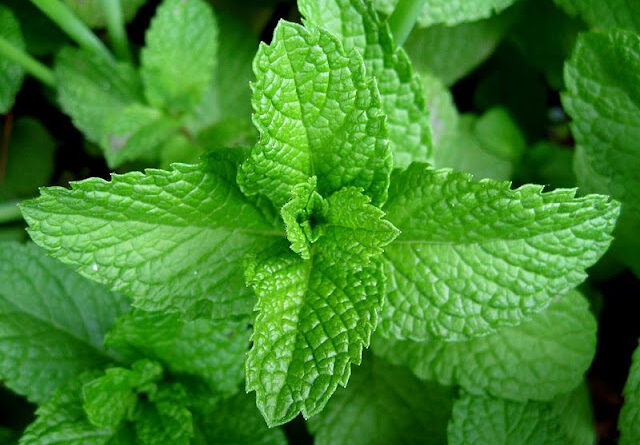Cultivation of Mint
Cultivation of Mint (PODINA)
Mint or Mentha is a perennial herb belonging to Genus mentha family Lamiaceae; Labiatae Which provide us essential oil and driven aroma compounds on its distillation Mint is an important leafy vegetable. Its leaves are used for flavouring soups, sauces, beverages and in chutneys. Ils commercial extract is sold as *Peppermint”, which is used in many industrial and pharmaceutical preparation.
The four main cultivated species in India are ;
-
Japanese Mint / Menthol (M. arvensis)
-
Pippermint (M. Piperita
-
Spearmint (M. spicata )
-
Bergamot mint ( M. citrata)
Health Benefits of Mint / Podina
Mint herbs is a synonymous of the freshness Despite its uses as a seasoning and dressing herb in various recipes this herb also known us for numerous health benefits which are as floors ;
-
Relives in indigestions due to the presence of various antioxidants and Phytonutrients Menthol present in mint help the enzymes necessary for digestion and reflexes the muscle of the stomach
-
It cures pains and aches and gives a calm feeling to the entire body.
-
It has potent anti-inflammatory and anti-bacterial properties
-
It helps in curing the oral infarction
-
It helps in preventing several allergies and asthma due to the presence of rosmarinic acid which acts as a powerful antioxidant.
-
Mint boosts the immunity because its leaves are packed with several nutrients like Calcium, Phosphorus, Vitamin C,D, and E and a small amount of vitamin B complex.
-
Mint helps in beating the stress and depressions Because it releases a small amount of serotonin in the brain
Soil & its Preparation for Mint Cultivation
Mint can grow on a wide range of soil. But sandy loam soils rich in organic content having good drainage facility are best suited for it. The pH level 6 to 6.75 is best for its cultivation The land should be thoroughly ploughed and harrowed. Mauring should be done by adding 25 tonnes of FYM per hectare
Varieties of Mint ;
It is propagated by seed or by creeping stolons / suckers or by means of cuttings of the runner. The root sucker from the previous crop can be used for planting The best time for planting this crop is October-November. But the crop can be planted throughout the year except rainy season. About 400 gm seeds or 100 kg cuttings are required for planting an acre.
Planting
7 – 10 cms long stolons/suckers are being planted in a shallow furrows about 6 to 8 cms deep maintaining the Row to Row distance 45 – 60 cms
Manuring
About 20 Cartloads of F.Y.M. 30kg single superphosphate and 20 kg of Muriate of Potash per acre is beneficial for this crop.
Irrigation
Water requirement in the mint crop is very high.It requires 10 to 12 Irrigation before the arrival of monsoon at the interval of 8 to 10 days and 3 to 4 irrigation after the departure of monsoon some time another 2 to 3 irrigation requires during the winter. To obtain the luxurious growth of the plant the sufficient balance between the water and fertilizers is very important.
Intercultural and weed control in Mint
The mint crop requires intensive weeding it is the most expensive operation of this crop Hence, the first 4 to 12 weeks are very crucial for the weed control an uninterrupted weed growth in the mint field may cause a substantial loss in the yield up to 60% Mint requires regular hoeing after the planting and one hand weeding after the first harvest. Both post and pre weedicides are available to check the weed growth But the chemical is not able to control monocot weeds after the rainy season hence the mechanical and chemical both method should be applied The recommended chemical control is an application of oxyfluorfen @ 0.5 a.i. kg per hectare in the combination of with organic mulch or apply pendimethalin @ 1 a.i.kg per hactare.
Crop Rotation
Crop rotation not only helps in controlling the weeds but it also gives better returns as far as the value of land is a concern. The popular crop rotation in the different parts of the country are —
-
Mint- Maize- Potato
-
Rice – Mint – Vegetable
-
Mint – peas – Vegetables
-
Mint – Maize – Vegetables
Harvesting
The crop is ready to first harvest after 120 days of the planting When the lower leaves start turning yellow delay in harvesting may cause yield loss due to the fall of leaves . The harvesting of mint should be done in a bright sunny day it should be harvest 2 cms above the ground with the help of Sickle and the subsequent harvesting can be done after the 80 – 90 days of intervals.
Yield
A good crop of the mint can give as high as 40 – 45 tonnes of fresh leaves The average yield of all the three cutting is 22 – 25 tonnes hectare A fresh leaves contain oil up 0.4%





